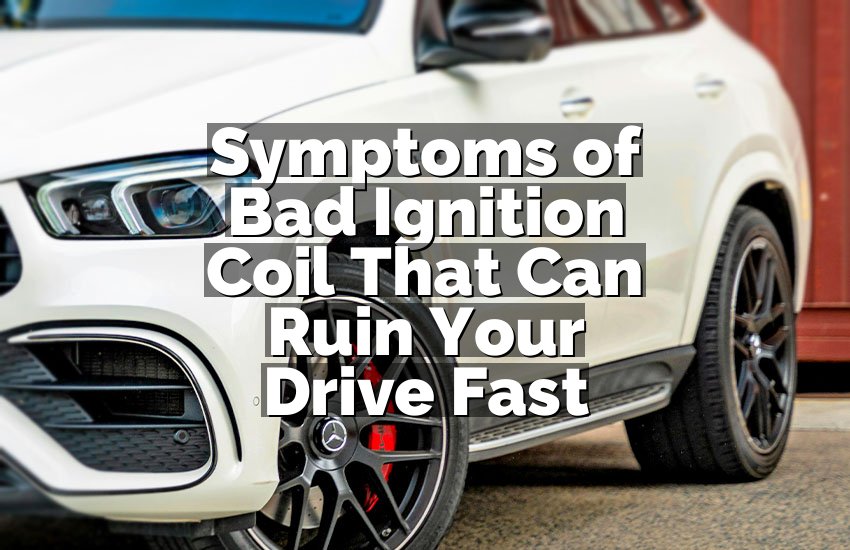If you’ve ever had a minor fender bender or accidentally bumped into something, you know how frustrating it can be to see a dent in your car’s bumper. Not only does it mess with your car’s look, but it might also make you feel like you need to replace the whole bumper, which can be costly. The good news is that getting a dent out of a bumper doesn’t always require expensive repairs. There are several easy and affordable ways to fix it yourself, no professional help needed!
In this article, we’ll walk you through the simple steps and techniques you can use to remove a dent from your car bumper. Whether it’s a plastic or metal bumper, we’ll cover all you need to know to restore your car’s appearance. So, let’s dive right in!
Understanding the Bumper Material: Why It Matters for Fixing Dents
Before you start trying to remove the dent, it’s important to know what kind of bumper you’re working with. Car bumpers come in different materials, mainly plastic and metal. Each material requires different methods for repair. Let’s break down what you need to know about bumper materials and why this is important for fixing dents.
Plastic Bumpers
Plastic bumpers are the most common type used in modern cars. They’re lightweight, durable, and flexible, but they can still get damaged if hit with enough force. A dent in a plastic bumper is usually a bit easier to fix compared to metal bumpers, mainly because plastic can be heated and manipulated back into shape. The repair methods for plastic bumpers are typically safe and require minimal equipment.
Metal Bumpers
Older vehicles and some high-end models use metal bumpers. These bumpers are sturdy and can handle a lot of force, but when they get dented, they’re harder to fix without professional help. Metal bumpers require special techniques such as pulling the dent out or using body filler to smooth out any imperfections. While it’s possible to do this yourself, it can be more challenging, especially if you’re not familiar with working with metal surfaces.
Why the Material Matters
Understanding your bumper material is key because the repair methods for plastic and metal bumpers are quite different. For example, plastic bumpers can often be repaired by heating and reshaping the dent. Metal bumpers, however, may need tools like a dent puller or filler to restore their smooth surface. So, make sure you know what you’re working with before starting the repair process!
Preparing Your Car for Dent Repair: The Essential First Steps
Before you get to work fixing the dent, you’ll need to take some basic steps to ensure that you can do the job safely and effectively. Preparation is key to a successful repair, so let’s go over what needs to be done first.
Gather the Right Tools and Materials
Having the proper tools and materials on hand is essential for getting the job done right. Here’s a simple list of what you might need, depending on the type of dent and bumper material:
- Hairdryer or heat gun: For heating plastic bumpers.
- Dent puller: This is useful for both plastic and metal bumpers, especially if the dent is large.
- Plunger: A simple, affordable tool for small dents in plastic bumpers.
- Bucket of hot water: For plastic bumpers, this can help in the softening process.
- Auto body filler: For metal bumpers or larger dents.
- Sandpaper: For smoothing out repaired areas, especially on metal bumpers.
- Towel or cloth: To clean the area before starting.
- Gloves: To protect your hands while working.
Clean the Bumper
Cleaning the bumper before starting any repair is essential to make sure that you don’t work with dirt or grime on the surface. This can interfere with the repair process, especially if you’re using filler or paint. Use a mild soap and water solution to clean the bumper, then wipe it down with a dry cloth to ensure it’s completely clean. For plastic bumpers, make sure the surface is free of debris that might scratch it during the heating process.
Assess the Damage
Take a good look at the dent to determine the best approach for fixing it. If it’s a small, shallow dent, you can usually fix it with basic DIY methods. However, if the dent is deep or the bumper is cracked, you may need more advanced tools or even professional help. It’s important to understand the severity of the damage before starting any repairs.
Protect Your Car’s Paint
When repairing a dent, the paint on your bumper is at risk of getting damaged. To avoid scratches or peeling, cover any areas near the dent that you don’t want to work on with painter’s tape. You can also use a cloth or old towel to shield the paint from heat if you’re using a heat gun.
Step-by-Step Methods to Remove the Dent from Your Bumper
Once you’ve got everything prepared, it’s time to start the actual repair. The method you use will depend on the type of bumper material and the size of the dent. Let’s go through the most effective methods for both plastic and metal bumpers.
For Plastic Bumpers: Using Heat to Reshape the Dent
Plastic bumpers are relatively easy to fix with heat. When heated, the plastic becomes more flexible, allowing you to push or pull the dent out. Here’s how you can fix a plastic bumper dent:
Step 1: Heat the Dent Area
Use a hairdryer or a heat gun to warm up the area around the dent. Hold the hairdryer a few inches away from the bumper and move it in circular motions to evenly heat the surface. You want to heat the area for about 30 seconds to a minute, depending on the size of the dent.
Step 2: Use a Plunger or Your Hands to Push the Dent Out
Once the plastic is warmed up and soft, you can use a plunger to pull the dent out. Simply place the plunger over the dent, creating a strong seal, and pull gently. If you don’t have a plunger, you can try pressing on the back of the bumper with your hands (if accessible). Be careful not to use too much force, as this could cause the plastic to crack.
Step 3: Let the Bumper Cool Down
After you’ve popped the dent out, allow the bumper to cool and harden back into place. If there are any minor imperfections left, you can smooth them out with your hands or a soft cloth. For more stubborn dents, repeat the process a couple of times.
For Metal Bumpers: Using a Dent Puller
Removing dents from metal bumpers is more challenging but still manageable with the right tools. One of the easiest ways to pull a dent out of a metal bumper is by using a dent puller. Here’s how:
Step 1: Attach the Dent Puller
A dent puller has a strong suction cup or hooks that help pull the metal back into place. Position the dent puller in the center of the dent and press down firmly to create a strong bond with the metal surface. Follow the manufacturer’s instructions for setting it up.
Step 2: Pull the Dent Out
Slowly pull on the dent puller to try and pull the dent out. Keep a steady hand and don’t apply too much pressure at once, as this could damage the bumper further. If the dent doesn’t pop out on the first try, use the dent puller a few more times to work the metal back into shape.
Step 3: Use Filler and Sandpaper
If there’s still a visible dent or scratch after using the puller, you can apply auto body filler to smooth out the surface. Once the filler is dry, use sandpaper to smooth out the area. Make sure to follow up with primer and paint if necessary to restore the bumper’s appearance.
What to Do If the Dent Is Too Severe for DIY Fixes
If your bumper’s dent is too large or deep to fix with DIY methods, it might be time to seek professional help. While fixing small dents on your own can be cost-effective, larger dents or cracks can require advanced tools and expertise that you might not have at home. Here’s when to call in the pros:
Severe Dents or Cracks
If the dent is deep or has caused the bumper to crack, DIY fixes may not be enough. A body shop can help restore your bumper and make it look as good as new. This might be more expensive, but it ensures the job is done correctly.
Paint Damage
If the paint on your bumper has been scratched or chipped during the denting process, you may need to have the bumper repainted professionally. This is especially important if you want to preserve the look and value of your car.
Time and Safety Considerations
Some bumper repairs take time, especially if you’re working on a metal bumper or a larger dent. If you’re not confident in your ability to fix the problem, it might be better to get professional help. Your car’s safety is important, and you don’t want to risk further damage to the bumper or surrounding areas.
I hope this guide has helped you understand the steps needed to fix a dent in your bumper. Whether you have a plastic or metal bumper, there are simple, affordable ways to repair the damage yourself. However, if the dent is too severe or the damage goes beyond a simple fix, don’t hesitate to seek professional help. A little effort can make a big difference in restoring your car’s appearance and keeping it looking great.
Frequently Asked Questions (FAQs)
Is it possible to fix a dent in a plastic bumper without professional help?
Yes, you can fix a dent in a plastic bumper on your own using methods like heating the area and using a plunger or your hands. The key is to use gentle force and heat to reshape the plastic.
Can I use a hairdryer to fix a dent in a metal bumper?
While a hairdryer can work well on plastic bumpers, it won’t be as effective on metal bumpers. Metal requires a dent puller or other tools to fix properly.
Do I need to remove the bumper to fix a dent?
In most cases, you don’t need to remove the bumper to fix a dent. You can repair it while it’s still attached to the car, though it may be easier to access the dent if you remove it in some cases.
Is it safe to use a heat gun on a plastic bumper?
Yes, it is safe to use a heat gun on a plastic bumper if you’re careful not to overheat the plastic. Make sure to hold the heat gun a few inches away from the surface and avoid focusing the heat on one spot for too long.
Can I use a suction cup dent puller on metal bumpers?
Yes, suction cup dent pullers can be used on metal bumpers. However, they work best on shallow dents. If the dent is deeper, you may need to use a more advanced method, like a dent repair kit or professional help.
Do I need to repaint my bumper after fixing a dent?
If the dent caused damage to the paint, you may need to repaint the bumper. After fixing the dent, you can smooth out the area with sandpaper and apply paint and primer to restore its original look.
Is it difficult to fix a dent in a bumper?
Fixing a small dent in a bumper can be fairly easy with the right tools and methods. However, larger dents or cracks may require more time, skill, or professional assistance.
Can I fix a dent in my bumper without leaving any marks?
It’s possible to fix a dent without leaving marks, especially if the bumper is plastic. Metal bumpers might require more attention to detail, such as filling and sanding to smooth out any imperfections.


